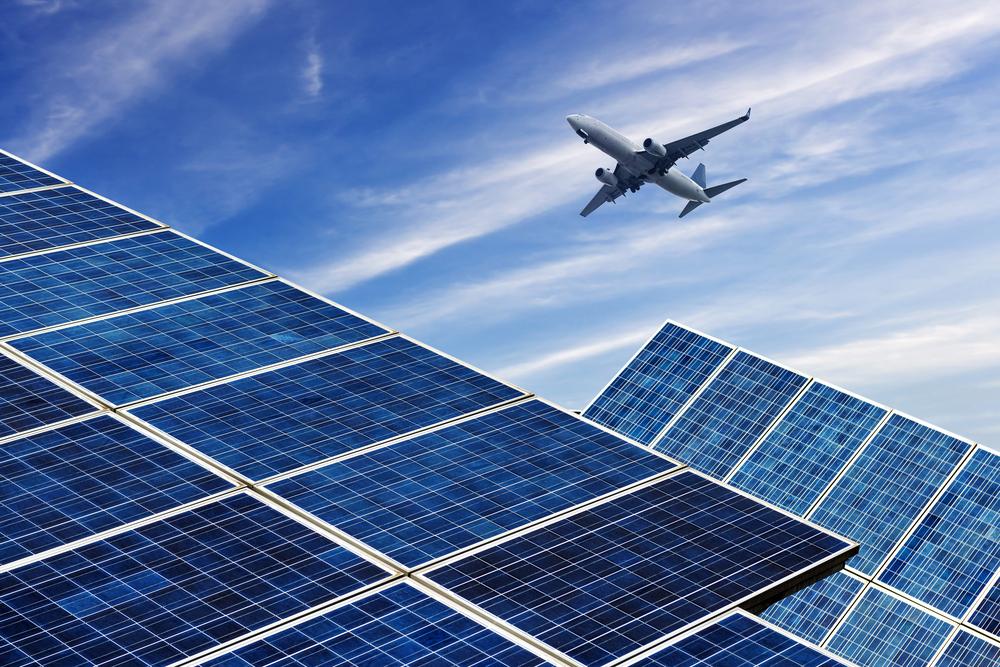Airports need lots of flat, open, unobstructed land surrounding them. Why not fill that open space with solar panels? Several large airports have done just that.
This week, Cochin International Airport Limited in Kochi, Kerala (India) inaugurated a 50 acre, 12 MW solar PV plant, making it the first airport in the world to offset 100% of its usage through the use of solar. The airport also has another 1 MW solar PV plant in addition to a smaller grid-connected 100 kW rooftop system, both of which were installed two years ago. Also in India, the Indira Gandhi International Airport near Delhi installed a 2.14 MW plant last year.


According to solarlove.org:
“The Airport Authority of India (AAI), which operates 125 airports across the country, including the Cochin and Kolkata airports, has decided to build solar power plants at about 30 of its airports.
AAI has plans to install 50 MW capacity plants in the first phase (by 2016), which would be enhanced to 150 MW over a period of time. The plants would be established on surplus land available at these identified airports or on the large rooftops of the airport structures.
A MoU was signed between AAI and Solar Energy Corporation Of India (SECI) for construction of these solar plants.”
Here in the United States, the Indianapolis International Airport holds the record for the largest solar installation at an airport. On a whopping 162 acres adjacent to the airports entrance, the project (which was built in two phases in 2013 and 2014) has a capacity of 17.5 megawatts, producing an average of 31.7 million kilowatt hours per year. That’s enough to power 3,210 homes.
Elsewhere, Minneapolis is putting 3 MW of solar on the roof of two parking ramps. Denver has installed 10 MW at Denver international. According to Harris, Miller, Miller and Hanson (a consulting firm that wrote an extensive report on solar at airports for the FAA) there are currently solar installations at more than 30 US airports.
The popularity of solar in the airport industry is not surprising. Energy costs are huge for airports, and payback from solar can be quick at this scale. Or, in a land lease or Power Purchase Agreement (PPA) situation where the array is owned and managed by a third party, these is virtually no up-front cost for the facility. Also, airports generate an immense amount of air pollution, and solar can help begin to offset some of those emissions. For some airports, like Albuquerque, New Mexico, grants have been available through the FAA’s Voluntary Airport Low Emissions (VALE) program, which helps airports maintain air quality standards required under the Clean Air Act.
There is one major concern for airport operations when it comes to using solar on-site. Glare and reflections from panels could potentially cause visibility issues. For this reason, the FAA has worked with Sandia National Laboratories to create the Solar Glare Hazard Analysis Tool (SGHAT), which can determine “when and where solar glare can occur throughout the year from a user-specified PV array as viewed from user-prescribed observation points.” This system can help eliminate any issues as the planning process begins for airports considering solar. To date, no safety issues have been reported at any airport solar arrays.
With both environmental and economic pressures bearing down on the air travel sector, plan to see a lot more airport solar installations in the near future.
——–
About the Author: Rich Dana serves as Director of Microenterprise Development for the Sustainable Living Department at Maharishi University of Management, working with students to develop innovative ideas and implement new projects. He is an experienced solar installer, a freelance writer and partner in Plan B Consulting. He has served as an energy specialist at the National Center for Appropriate Technology and President of the Iowa Renewable Energy Association.






